I recently had the wonderful experience of attending a Japanese Tea Ceremony. It was an opportunity to explore traditional Japanese tea culture and learn the secrets of making the perfect matcha.

The tea made at a Japanese Tea Ceremony is called matcha, a powdered green tea known for its vibrant color and distinctive flavor. Matcha is made from shade-grown tea leaves, carefully harvested, steamed, dried, and ground into a fine powder.
The Japanese Tea Ceremony demonstration I attended had the best matcha I have ever tasted. I learned more about the historical context of the Japanese Tea Ceremony and the various utensils used in its presentation.
Our host was Drew Sodo Hanson, a student of the Urasenke Tradition of Japanese Tea since 1995 and a licensed teacher in this tradition. A knowledgeable tea master and owner of the Boukakuan Japanese Tea House, he greeted us warmly and guided us through the intricate art of the Japanese Tea Ceremony.
The traditional Japanese tea ceremony is not only about making matcha but also the flower arrangement, how the tea room is designed, and how the Japanese gardens are constructed. Even the ceramic bowls are selected to reflect the season. Every detail is carefully curated.
A serene, minimalist tea room is adorned with beautiful tatami mats and delicate decorations. The atmosphere is incredibly calm and peaceful, setting the perfect tone for the tea ceremony.

Shades of Earl Grey - $19.95
from: Firebelly Teas Inc.
Various foods are served during formal tea ceremonies. I tasted some of the most delicious traditional Japanese sweets typically served at each tea. I especially enjoyed the mochi, a traditional Japanese rice cake made from glutinous rice, also known as sweet or sticky rice. Tropical Fields is the brand of mochi we had.
What Is The Japanese Tea Ceremony?

Chado is the Japanese Way of Tea, with many philosophical foundations expressed through the tea ceremony.
The Japanese Tea Ceremony, known as "sado" or "chanoyu," is a highly ritualized and artistic practice that embodies the essence of Japanese culture and hospitality. It is a ceremonial way of preparing and serving matcha with the utmost care, precision, and reverence.
A Japanese Tea Ceremony is a unique and immersive experience that allows participants to appreciate the harmonious blend of aesthetics, mindfulness, and social interaction.
History of The Japanese Tea Ceremony
The formal tea ceremony originated in Japan during the 9th century. It gained prominence in the 16th century when Sen no Rikyu, a renowned tea master, refined the art form and established the foundational principles of the tea ceremony that are followed today.
Rikyu emphasized the concepts of harmony (wa), respect (kei), purity (sei), and tranquility (jaku), which serve as the guiding principles for the tea ceremony and are deeply rooted in Japanese traditions, aesthetics, and Zen Buddhism.
When entering a traditional tea house or room, you are transported to a serene and meditative atmosphere. The tea house is often a simple wooden structure with a small door designed to diminish the importance of self and create a sense of tranquility, intimacy, and inner peace.
Its architecture is influenced by the Zen philosophy of Buddhist monks, with minimalistic elements that emphasize the natural beauty of the surroundings.
Arriving at The Japenese Tea Ceremony

Our demonstration was in a meeting room, but in a typical tea ceremony, you are welcomed by the host or hostess responsible for conducting the tea ceremony. Hanson, our host, was dressed in a traditional kimono and exuded a sense of grace and hospitality.
Before entering a traditional tea room, you may be invited to purify yourself by rinsing your hands and mouth with a stone basin called a "tsukubai," symbolizing the transition from the outside world to the sacred space of the tea room.
The tea room is meticulously arranged with carefully chosen items, each holding symbolic meaning. The focal point is the "tokonoma," an alcove displaying a scroll painting or calligraphy, setting the ceremony's tone and theme.
The tea utensils, including the tea bowl (chawan), tea scoop (chashaku), tea caddy (natsume), and bamboo whisk (chasen), were all arranged in an aesthetically pleasing manner.
The ceremony begins once the guests are seated in a specific order, following the predetermined etiquette. Hanson performed graceful and deliberate movements choreographed to create a harmonious and meditative ambiance.
Every gesture was executed with precision and mindfulness, from how the tea is scooped, whisked, and poured to the placement of each utensil.
Preparing The Matcha

The first step was preparing the matcha powder itself. High-quality matcha is crucial for achieving that rich, vibrant flavor. The tea leaves are carefully cultivated and shaded before ground into a fine powder. Hanson explained that the best matcha is bright green, indicating its freshness and quality.
Once the matcha powder was ready, he moved on to the next step: using a "chasen" bamboo whisk to mix the powder with hot water. This is where the magic happens! Hanson taught us the importance of creating a smooth, frothy consistency by whisking in a quick, zigzag motion.
Now, here's the secret to making the best matcha: the temperature of the water. Hanson emphasized the significance of using water that's not too hot, as it can scorch the delicate matcha leaves and affect the taste.
Typically, the water temperature recommendation is around 160-175°F (70-80°C) for matcha. This temperature ensures that the matcha retains its subtle flavors and doesn't become bitter. However, he recommended using warm water at an even lower temperature to avoid any bitter taste of the tea.
Every detail is focused, ensuring the tea has perfect consistency and flavor. The bowl of tea was then presented to each guest individually. Receiving it is a moment of gratitude and appreciation.
Tea Master Tips
Hanson made a few recommendations for the perfect matcha:
- Use a water temperature of 150°F (66°C). He explained the easiest way to achieve this temperature is to boil the water, then let it sit for ten minutes before pouring it over the matcha.
- Keep fresh matcha in a sealed tin in the refrigerator. Place the sealed container in a zip lock bag to keep out moisture.
- Sift matcha through a fine sieve before preparing to prevent clumping.
- Purchase directly from matcha farmers in Japan. The resources page on their website lists a few different vendors. Horaido is their number one Boukakuan house tea.
- Our host purchases his matcha directly from farmers in Japan for the best matcha. Only some may have the opportunity to do that. If not, Ippodo Tea is an excellent source of Japanese matcha.
The Precise Ceremonial Process of Making Matcha:
- Gather the utensils: The host or hostess prepares the necessary tea utensils, including a tea bowl (chawan), tea scoop (chashaku), tea whisk (chasen), and tea caddy (natsume). These utensils are usually made of bamboo, ceramic, or lacquerware.
- Warm the tea bowl: The host or hostess warms it by pouring hot water into it and swirling it gently. This process helps to maintain the temperature of the tea during preparation.
- Measure the matcha: Using the tea scoop (chashaku), the host or hostess carefully measures the appropriate amount of matcha powder and places it in the tea bowl. The amount of matcha used can vary depending on personal preference and the type of tea ceremony.
- Add hot water: The host or hostess pours hot water into the tea bowl containing the matcha. The water is added gradually to the matcha and whisked using the tea whisk (chasen).
- Whisk the tea: The host or hostess vigorously whisks the matcha and hot water in a back-and-forth motion, creating a frothy and creamy consistency. The goal is to achieve a smooth, uniform texture without any clumps. Matcha is sifted before use to prevent lumps.
- Inspect and appreciate: Before serving the tea, the host or hostess takes a moment to admire the prepared matcha, appreciating its vibrant green color and the froth on the surface. This step demonstrates the host's attention to detail and mindfulness.
- Serve the tea: The tea bowl is held with the right hand, and the left hand supports the bottom. The host or hostess turns the tea bowl slightly to present the front of the bowl to the guest, indicating that it is ready to be received.
Drinking Ceremonial Matcha Properly

When serving tea to guests, there is a specific Japanese tea ceremony etiquette to follow:
- The guest receives the tea bowl with their right hand and places it in their left hand.
- Before drinking, the guest rotates the bowl clockwise twice, acknowledging appreciation to the host.
- The guest then takes small sips, enjoying the flavor and texture of the matcha.
- After finishing the tea, the guest can use their right hand to rotate the tea bowl counterclockwise and examine its design or craftsmanship if desired.
- Finally, the guest returns the tea bowl to the host with both hands, expressing gratitude for the experience.
Sipping the tea is a meditative experience. The flavor of matcha is distinct, rich, and smooth. Guests are encouraged to savor each sip, appreciating the tea's aroma, texture, and taste. During the tea ceremony, the conversation is kept minimal, and silence is often observed to enhance the contemplative nature of the experience.
Related:
- How To Make Matcha Without a Traditional Whisk
- How To Select The Best Matcha To Make at Home
- How To Make The Best Matcha Latte Hot or Iced
Beyond the tea itself, the tea ceremony represents a profound cultural and philosophical tradition. It embodies principles of mindfulness, simplicity, and interconnectedness with nature. The tea ceremony encourages guests to be present at the moment, find beauty in simplicity, and appreciate life's transient nature.
The Japanese tea ceremony is a highly ritualized practice, and there may be variations in the specific steps and utensils used depending on the particular tea ceremony, school, or style. The intricacies and details of the tea ceremony are often learned through dedicated study and practice.
Tea Ceremony Impressions
After nine years of Catholic School, I couldn't help but see similarities to the Celebration of the Eucharist during the tea masters' precise preparation and serving of matcha. Both ceremonies are highly ritualistic, symbolic, and solemn, with a deep reverence for the host or, in this case, tea.
Hanson explained that Japanese tea masters directly borrowed rituals or practices from the Jesuit missionaries' Celebration of the Eucharist. The Jesuits were responsible for introducing Christianity to Japan. St. Francis Xavier, SJ, and the Jesuits landed in Japan in 1549, establishing several Jesuit communities.
Even though the development of the Japanese Tea Ceremony predates the arrival of Jesuit missionaries in Japan by several centuries, they may have been influential.
The Best Matcha I Ever Tasted
The aroma of the freshly prepared matcha was incredibly inviting, and the vibrant green color was visually captivating. With anticipation, I took my first sip; it was like nothing I'd ever tasted!
The flavor of the matcha was smooth and subtly sweet. It had a pleasant umami undertone that lingered on my palate. I could appreciate the craftsmanship that went into cultivating and preparing the matcha, making the experience all the more special.
Attending a Japanese tea ceremony is not just about the tea; it is an immersive journey into the heart of Japanese aesthetics, history, and spirituality. It is an opportunity to experience the Japanese culture's grace and tranquility, leaving you with a sense of harmony and peace.
The instruction taught me the purpose of the tea ceremony and the fine art of making matcha which deepened my appreciation for its rich cultural heritage. Although not a religious ceremony, it is a spiritual one designed to appreciate and revere the beauty of simplicity, nature, and connections between people.
If you can attend a Japanese tea ceremony, I highly recommend it. The unforgettable experience might spoil you for any other matcha you'll ever have.
Remember the secrets: high-quality Japanese matcha, the right water temperature, and the delicate whisking technique. Cheers to a perfect cup of matcha! 🍵



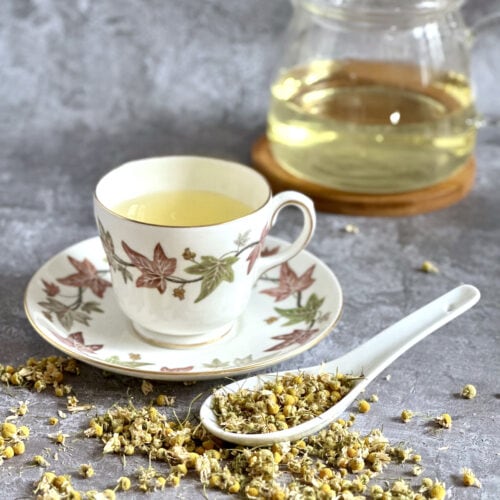
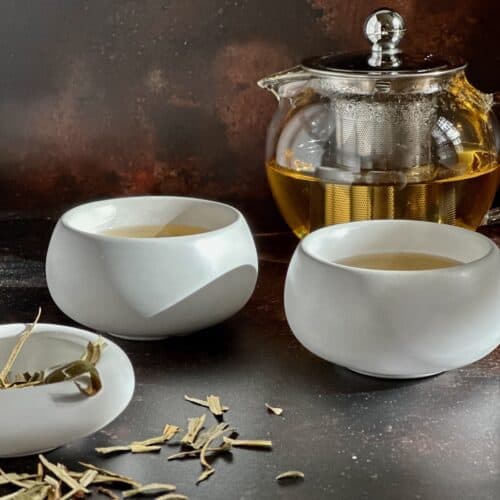
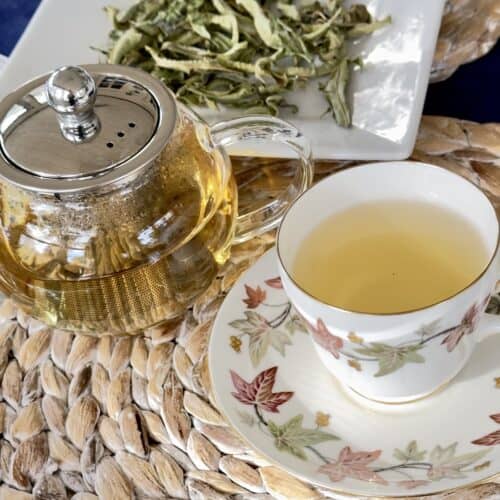
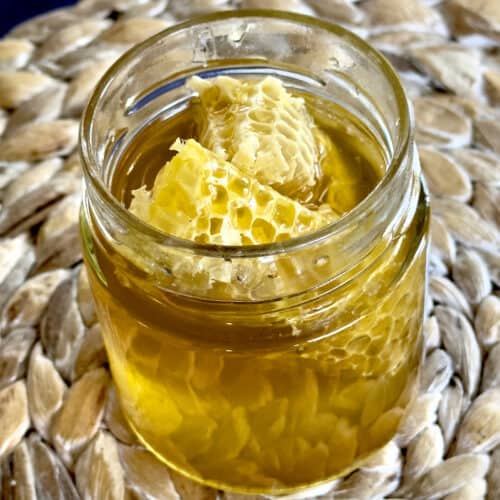
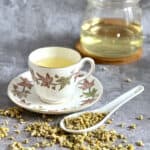
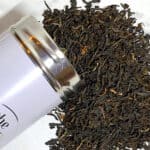
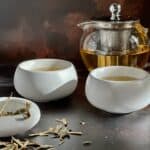
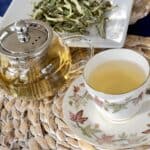


Jerry McBride
I'm glad to know about the low water temperature. However, what is the water to tea ratio. Do you still recommend to Use ½ teaspoon (1 gm) matcha to ½ cup (120 ml) of filtered water
Mary Ann Rollano
Yes